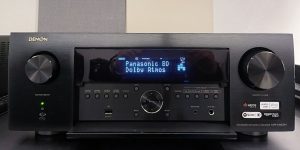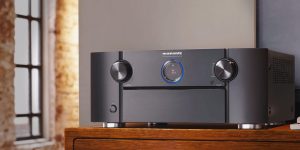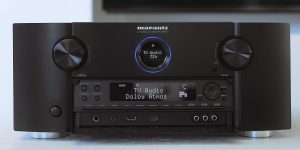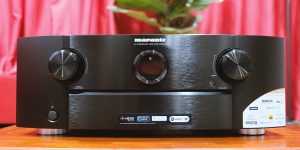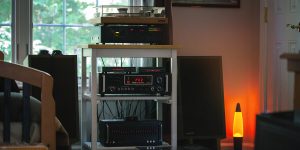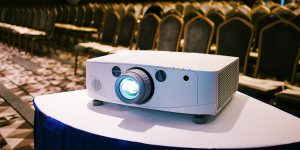Room acoustics are fundamental in achieving optimal sound reproduction in any home theater setup. But have you ever considered the importance of your AV receiver’s firmware in room correction? This article will explore the fascinating world of audio room correction and discuss some of the most popular room EQ software. So let’s embark together on this sonic journey and learn how to make the most of your home theater system and enjoy a truly immersive audio experience!
Basics of room correction
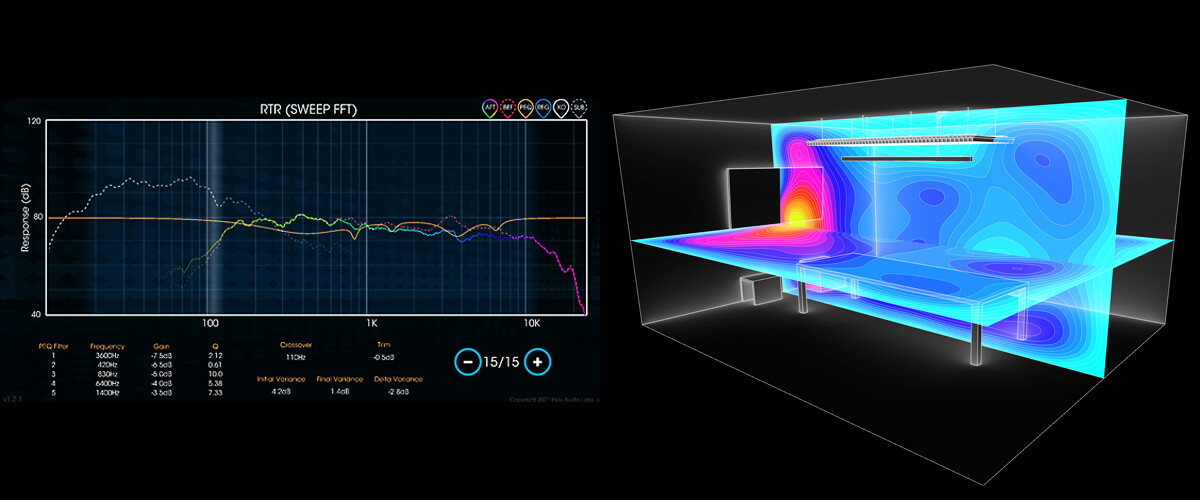
Before we dive into specific room correction software, let’s first understand the basics. Sound waves propagate through the air and interact with the room’s dimensions, materials, and other factors. This interaction can cause sound reflection, resulting in standing waves, room modes, and other acoustic phenomena.
The science of sound waves and reflections
When your speakers produce sound waves, they bounce off walls, floors, and ceilings, creating reflections that interfere with the direct sound reaching your ears. These reflections can cause peaks and dips in the frequency response, muddying the overall sound quality. To understand how room correction software works, it’s essential to recognize the challenges these reflections pose.
Challenges in optimizing room acoustics
Optimizing room acoustics can be a daunting task. Every room is unique, and factors like room size, shape, and materials can significantly impact sound quality. Even the placement of furniture can make a difference. In my experience, digital room correction software is one of the most effective ways to tackle these challenges.
The role of digital signal processing (DSP)
Digital Signal Processing (DSP) lies at the heart of room correction software. By analyzing the acoustic properties of your room, DSP can apply equalization, time alignment, and phase correction to the audio signal, helping to minimize the negative effects of room acoustics.
Now that we’ve covered the basics, let’s take a closer look at some specific room correction systems.
Audyssey Room Correction

Audyssey Room Correction, integrated into numerous AV receivers, employs a range of advanced features and technologies to enhance the overall sound quality in your home theater setup. Let’s dive into the technical aspects and explore my experience with Audyssey:
- MultEQ XT32: This high-resolution room correction technology is the most advanced version of Audyssey’s MultEQ algorithm. It provides greater filter resolution for both satellites and subwoofers, resulting in a more accurate room correction and a smoother listening experience.
- Speaker Measurements: Audyssey uses a specially designed microphone to take multiple measurements of each speaker in the room. These measurements capture the unique acoustic properties and interactions between the speakers and the room, providing essential data for calibration.
- EQ Filters: Audyssey calculates and applies precise EQ filters to each speaker channel based on speaker measurements. These filters correct frequency response anomalies caused by room acoustics, ensuring a more balanced and natural sound.
- Dynamic EQ: This feature maintains a consistent tonal balance and surround impression at any volume level. As you lower the volume, Dynamic EQ compensates for the human ear’s reduced sensitivity to bass and surround channels, preserving the intended mix of the content creator.
- Subwoofer Optimization: Audyssey can optimize subwoofer performance by adjusting levels, delays, and phases, resulting in tighter and more accurate bass reproduction.
The calibration process was straightforward and user-friendly in my experience with the Audyssey Room Correction. In addition, the MultEQ XT32 technology delivered remarkable improvements in sound quality, providing a more immersive and enjoyable listening experience. Combining EQ filters, Dynamic EQ, and subwoofer optimization offered a well-rounded solution for addressing various room acoustics challenges.
However, it’s worth noting that some users may find the resulting sound overly processed or lacking in warmth due to the aggressive correction. Nevertheless, Audyssey remains a popular and effective choice for home theater enthusiasts looking to tackle room acoustics issues and enhance their audio experience.
YPAO (Yamaha Parametric Room Acoustic Optimizer)

YPAO (Yamaha Parametric Room Acoustic Optimizer) is a proprietary room correction system developed by Yamaha, exclusively integrated into their AV receivers. YPAO employs a variety of advanced features and technologies to improve the overall sound quality in your home theater setup. Let’s examine the technical aspects and share my experience with YPAO:
- High-Precision EQ: YPAO uses high-precision equalization filters to correct frequency response anomalies caused by room acoustics. These filters ensure a more balanced and natural sound tailored to your room’s characteristics.
- Speaker Measurements: Similar to Audyssey, YPAO utilizes a specially designed microphone to take multiple measurements of each speaker in the room. These measurements capture the room’s unique acoustic properties and speakers’ interactions, providing essential data for the calibration process.
- Reflection Control: YPAO’s Reflection Control technology minimizes the negative impact of early reflections, which can cause comb filtering and other acoustic issues. Adjusting the speaker’s EQ aims to create a clearer and more focused soundstage.
- Multiple Listening Positions: YPAO allows for measurements at multiple listening positions, resulting in a more consistent and accurate listening experience for all seats in the room.
- Subwoofer Optimization: Like Audyssey, YPAO can optimize subwoofer performance by adjusting levels, delays, and phases, resulting in tighter and more accurate bass reproduction.
While working with YPAO, I found the calibration process user-friendly and efficient. The high-precision EQ and reflection control technologies delivered noticeable improvements in sound quality, providing a more immersive and enjoyable listening experience. Combining multiple listening positions and subwoofer optimization offered a comprehensive solution for addressing various room acoustics challenges.
While YPAO may not be as aggressive in its correction as Audyssey, it still delivers a natural and well-balanced sound, which some users might prefer. Moreover, as an exclusive feature of Yamaha AV receivers, YPAO is an excellent choice for those who value natural sound reproduction and a user-friendly calibration process.
MCACC (Pioneer Multi-Channel Acoustic Calibration System)
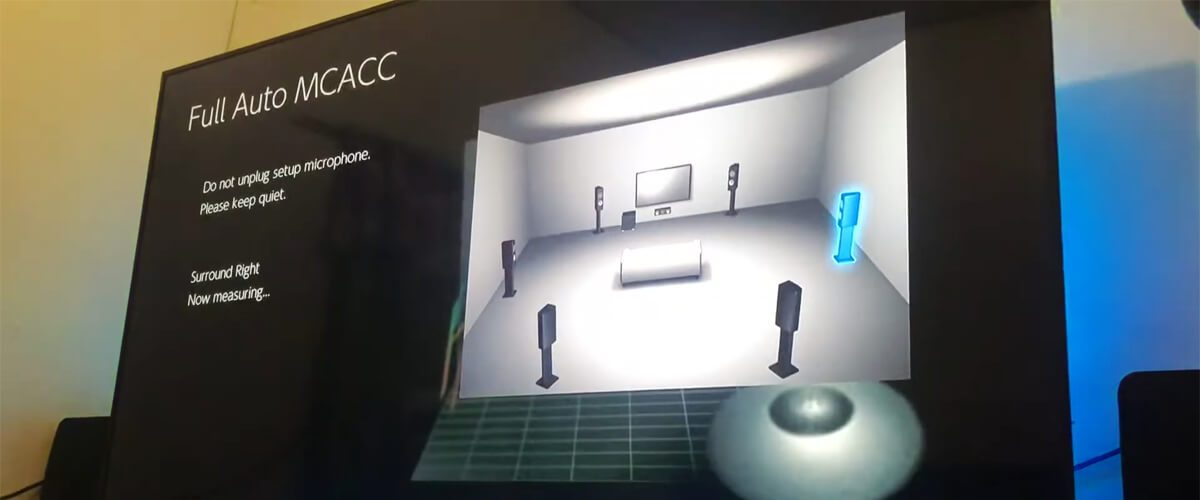
MCACC (Pioneer Multi-Channel Acoustic Calibration System) is a proprietary room correction system developed by Pioneer, exclusively integrated into their AV receivers. MCACC employs a variety of advanced features and technologies to enhance the overall sound quality in your home theater setup. Let’s delve into the technical aspects and share my experience with MCACC:
- Full Band Phase Control: MCACC’s Full Band Phase Control technology is designed to align the phase of all speaker channels, ensuring a coherent and well-timed soundstage. This results in improved imaging and a more immersive listening experience.
- Speaker Measurements: Similar to Audyssey and YPAO, MCACC utilizes a specially designed microphone to take multiple measurements of each speaker in the room. These measurements capture the room’s unique acoustic properties and speakers’ interactions, providing essential data for calibration.
- Precision Distance Setting: MCACC calculates the distance between each speaker and the listening position, adjusting individual channel delays accordingly. This feature ensures that sound from all speakers arrives simultaneously at the listener’s ears, creating a cohesive and enveloping sound field.
- EQ Calibration: MCACC calculates and applies precise EQ filters to each speaker channel based on speaker measurements. These filters correct frequency response anomalies caused by room acoustics, ensuring a more balanced and natural sound.
- Subwoofer Optimization: Like Audyssey and YPAO, MCACC can optimize subwoofer performance by adjusting levels, delays, and phases, resulting in tighter and more accurate bass reproduction.
During my experience with MCACC, I found the calibration process intuitive and efficient. The Full Band Phase Control and Precision Distance Setting technologies delivered noticeable improvements in sound quality, providing a more immersive and enjoyable listening experience. In addition, the combination of EQ calibration and subwoofer optimization offered a well-rounded solution for addressing various room acoustics challenges.
While MCACC may not be as comprehensive in its correction as Audyssey, it still delivers a natural and well-balanced sound, often comparable to YPAO. As an exclusive feature of Pioneer AV receivers, MCACC is an excellent choice for those who value natural sound reproduction and a user-friendly calibration process.
Comparing Audyssey, YPAO, and MCACC
When it comes to comparing Audyssey, YPAO, and MCACC, it’s essential to consider various factors, such as performance, accuracy, user experience, and ease of use. Each system has pros and cons, and your personal preference and your room’s specific characteristics will play a significant role in determining the best fit for your needs.
Here’s a detailed comparison table to help you understand the differences between these three room correction systems:
| Feature | Audyssey | YPAO | MCACC |
|---|---|---|---|
| Correction Capabilities | Most powerful, offering comprehensive correction | Effective, but may not address severe issues | Decent job, but not as comprehensive as Audyssey |
| Sound Character | Precise, but may sound overly processed | Natural sound, preferred by some users | Natural sound, often compared to YPAO |
| Calibration Process | Straightforward, with a step-by-step approach | Similar to Audyssey, user-friendly | User-friendly, comparable to other systems |
| Number of Measurement Points | Multiple, offering a more accurate calibration | Typically fewer than Audyssey | Usually fewer than Audyssey |
| Ease of Use | Generally easy to use, with clear instructions | Comparable to Audyssey, intuitive | Comparable to both Audyssey and YPAO |
| Manual Adjustments | Allows for fine-tuning, but can be complex | Easier manual adjustments | Allows manual adjustments, relatively simple |
| Compatibility | Found in various brands, including Denon and Marantz | Exclusive to Yamaha AV receivers | Exclusive to Pioneer AV receivers |
The table shows that Audyssey offers the most powerful correction capabilities, making it suitable for those seeking a comprehensive solution. However, some users might find the sound overly processed and prefer the more natural sound offered by YPAO or MCACC.
These two technologies provide a more natural sound, with YPAO exclusive to Yamaha AV receivers and MCACC exclusive to Pioneer AV receivers. While their correction capabilities might not be as comprehensive as Audyssey’s, they still offer effective room correction for many users.
The calibration process and ease of use are generally comparable among these systems. However, the number of measurement points during calibration might differ, with Audyssey typically offering more points for more accurate calibration.
Ultimately, the choice between Audyssey, YPAO, and MCACC will depend on your personal preferences, the specific acoustic challenges of your room, and the brand of AV receiver you choose. By understanding the differences between these room correction systems, you’ll be better equipped to make an informed decision and enhance your home theater experience.
Tips for maximizing room correction software
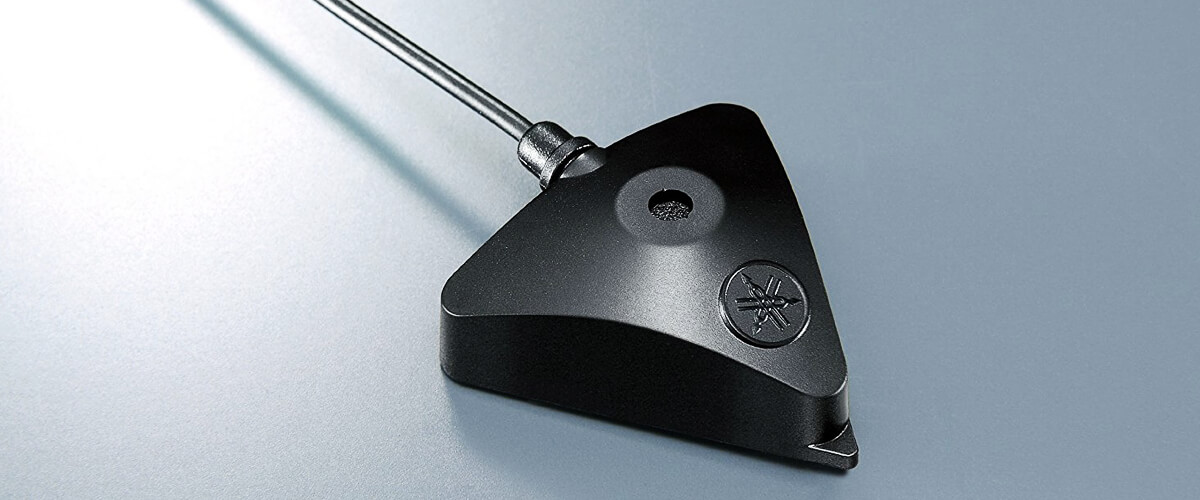
It would help to consider additional factors to get the most out of your room correction software.
Proper speaker placement and room setup
Proper speaker placement is vital regardless of which room correction system you use. Ensure your speakers are positioned correctly by following distance and angle recommendations relative to your listening position. Also, try to minimize sound reflection by placing absorbent materials, such as curtains or acoustic panels, on the walls and ceiling.
Fine-tuning and manual adjustments
While room correction software can work wonders, it’s not always perfect. Don’t be afraid to manually adjust parameters such as speaker levels, crossover points, or equalization if needed. Trust your ears and experiment with different settings to find the sound that suits your preferences.
Regular recalibration
The acoustics of your room may change over time due to furniture rearrangements, new decorations, or other changes. Therefore, I recommend periodic recalibration to ensure your room correction system works optimally. In my experience, recalibration every six months or so is a good rule of thumb.
In conclusion, room acoustics play an important role in sound reproduction, and room correction software such as Audyssey, YPAO, and MCACC can help optimize your home theater. By understanding the science behind these systems and following the tips above, you’ll be on your way to a deeper and more enjoyable listening experience.

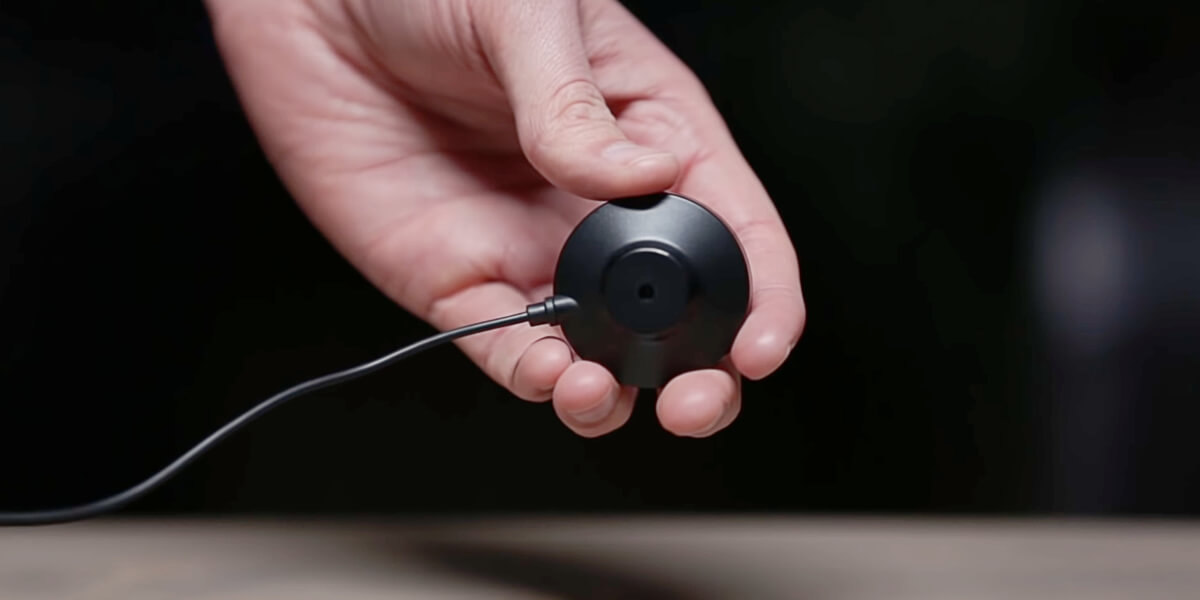


![Best 2-Channel Receiver [Expert Reviews and Buying Guide]](https://hometheaterology.com/wp-content/uploads/2023/11/best-2-channel-receiver-stereo-300x150.jpg)

